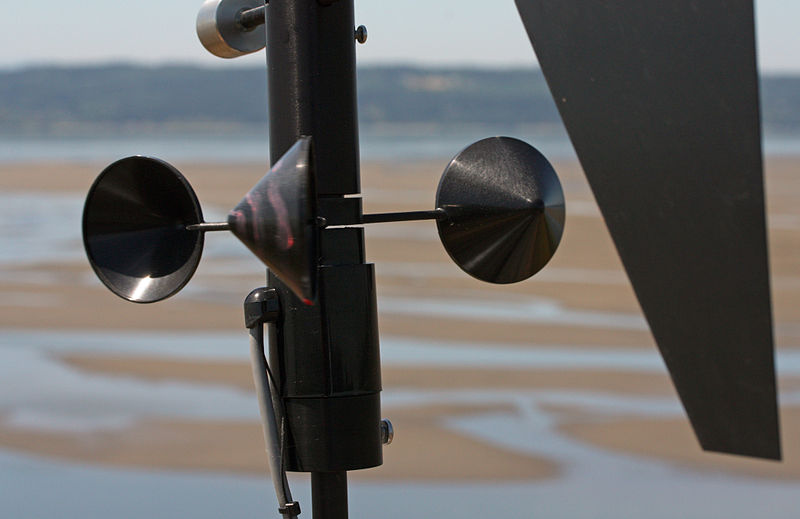

Measuring Wind Speed: What is an anemometer?
Wind is simply the movement of air, but sometimes this movement can be pretty fast! Those of us in the South of England have recent memories of the St Jude’s Day storm on 28 October 2013 and the disruption caused by gusts of up to 99mph. As well as meteorologists, many other people are interested in how fast the wind is blowing, ranging from athletes such as parachutists and sailors to those concerned with hazardous winds, such as air traffic controllers and crane operators. But how do we measure its speed?
How do we measure wind speed?
A device for measuring wind speed is known as an anemometer, and there are many different types. The type used on weather stations and hand-held versions uses three cups on a spindle – the wind force on the open side of the cup is greater than that on the rounded side, making the cups rotate. They rotate faster in stronger winds; an electronic counter converts this rotation into wind speed.
A cheaper type is the propeller anemometer, but to get an accurate measure of speed, it has to be kept facing the wind – whose direction changes from one moment to the next, which can sometimes be tricky. A cup anemometer has to be held vertically, and it will measure wind from any direction.
There are other types – ranging from a simple “ping-pong ball” anemometer you can make yourself to more accurate but more expensive sonic anemometers that rely on measuring the speed that sound travels in the wind. Depending on the wind data’s use, the speed is either averaged over a few minutes or the maximum speed is taken - known as a gust. Cup and propeller anemometers will usually indicate both values, with a choice of units – mph (miles per hour) for landlubbers or knots (nautical miles per hour – some 15% faster than mph) for sailors and airmen.
Suppose wind speed at one location is to be compared with others around the country. In that case, the anemometer will have to be well exposed, that is, kept well away from buildings or trees that can slow the wind down – “more than 300 metres away from large obstacles”, say the international rules. In addition, because wind speed increases with height above the ground, a standard measurement height of 10 metres is adopted. However, most amateurs with weather stations cannot keep to these rules (and neither can some Met Office stations), so the general guidance is to make measurements as high as possible in an area as open as possible.
The highest officially-recognised gust at a low-level weather station was 142mph at Fraserburgh, Scotland, on 13 February 1989, but on the top of mountains, the wind is generally much stronger – gusts of 173mph were recorded on Cairngorm on 20 March 1986.




